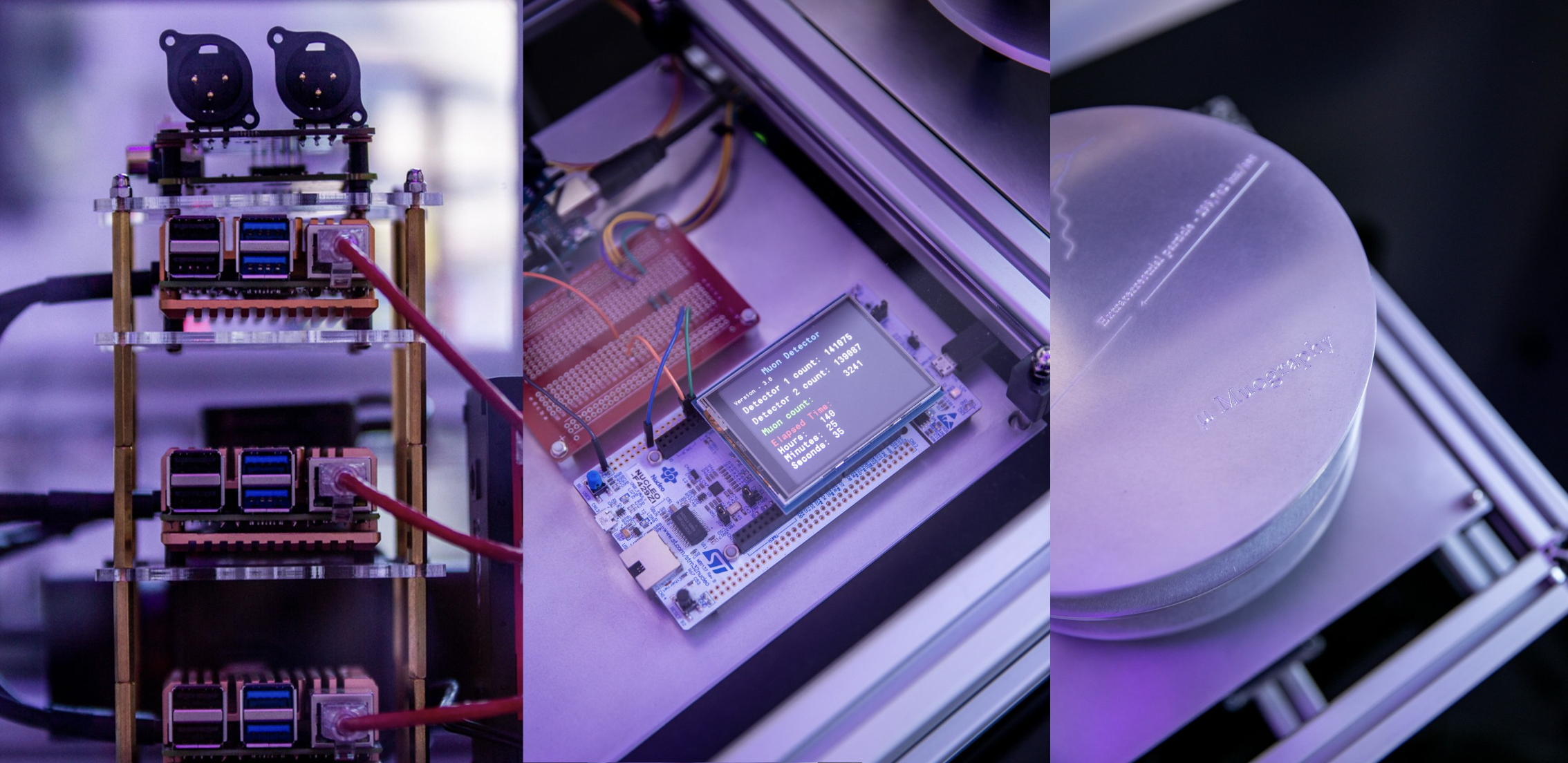µ Muography - Dark Matters at Science Gallery Melbourne
Science Gallery Melbourne
ON NOW
05.08.23 - 02.12.23
EXHIBITION LINKS:
Head HERE to build your own project and adapt.
View the exhibition HERE.
ARTS AT CERN
THE ARC CENTRE OF EXCELLENCE FOR DARK MATTER PARTICLE PHYSICS
Exhibition Statement:
DARK MATTERS is an exhibition in collaboration with Arts at CERN and the ARC Centre of Excellence for Dark Matter Particle Physics. The exhibition aims to explore the fundamental essence of life and the universe, and how so much of it remains a mystery to us.
Deep dive into the unseen, the unknown and the unspoken – will we ever fully understand the forces at play in our own lives, both on an individual level and on a planetary and universal scale? Dark matter consists of a mysterious substance that does not present an interaction with electromagnetic forces, which means it does not absorb, reflect it, or emit light. In an era defined by the power of modelling data, technology and simulations, the search for dark matter can be seen as a symbol of the limits of our cognitive experience – how might it help us imagine new possibilities for life, and our relationships with non-human entities or systems?
Through local and international experimental projects – some developed in conversation with scientists and researchers – explore life and all the dark matter that flows through it, under it and collides with it.
DARK MATTERS is co-curated by Mónica Bello, Head of Arts at CERN and Tilly Boleyn, Head of Curatorial at Science Gallery Melbourne in collaboration with a curatorial panel of young people.
Artist Statement:
Muon particles are part of the ancient language of matter that makes up everything in existence yet are invisible to human perception. With the use of DIY sensors and LED light pulses indicating the brief presence of a muon, you will be connected to the supermassive picture of the observable universe for 2.2 microseconds. Witness cosmic art in progress as we hand over creative process to some of the oldest known particles in the universe. Each muon strike leaves a delicate trail of electrons in its wake – making a unique cosmological image form over the duration of the exhibition. Jon uses these particle detection images to score the soundtrack for the work, allowing the muons to write the music.
Thanks to Jerry Petry and his excellent Muon Detector project on Hackster IO, and opensource software DIY Webcam Particle Detector developed by Lodovico Lappetito for therimino.com
Original Muon music scores developed using Olivia Jack’s PIXELSYNTH, a browser-based synthesizer for creating sounds from images and drawings, programmed using javascript and Web Audio. PIXELSYNTH is inspired by the analog ANS Synthesizer created by Evgeny Murzin in 1937 for composing musical scores. Used with permission from Olivia Jack.
Materials: Experimental Particle Detector (Muon Subatomic Particles, cosmic rays, deep time, aluminium, brass, LED lights, micro controllers, open-source software, PC computer, modified camera sensor, geiger counters, hand-built circuitry, code, Tarantula Nebula screensaver image by NASA, ESA, CSA, STScl, Webb ERO Production Team).








Image credits:
Images 1-2: Installation view of µ Muography, Science Gallery Melbourne's DARK MATTERS. Photography: Alan Weedon, 2023.
Images 3-8: Video stills and muon detection images. Images: Jon Butt